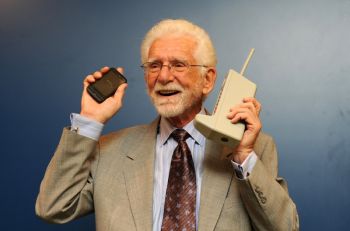Illinois Tech Assistant Professor Publishes Paper in Science on Novel Chemistry behind Ultra-High Power Density Batteries
Mohammad Asadi’s insights will let him further optimize battery design, with the potential to transform electrifying transportation

CHICAGO—February 2, 2023—Mohammad Asadi, assistant professor of chemical engineering at Illinois Institute of Technology, has published a paper in the journal Science describing the chemistry behind his novel lithium-air battery design. The insights will allow him to further optimize the battery design, with the potential for reaching ultra-high power densities far beyond current lithium-ion technology.
The battery design has the potential to store one kilowatt-hour per kilogram or higher—four times greater than lithium-ion battery technology, which would be transformative for electrifying transportation, especially heavy-duty vehicles such as airplanes, trains, and submarines.
Asadi aimed to make a battery with a solid electrolyte, which provides safety and energy benefits compared to liquid electrolyte batteries, and sought an option that would be compatible with the cathode and anode technologies that he has been developing for use in lithium-air batteries. He chose a mix of polymer and ceramic, which are the two most common solid electrolytes but both of which have downsides. By combining them, Asadi found that he could take advantage of ceramic’s high ionic conductivity and the high stability and high interfacial connection of the polymer.
The result allows for the critical reversible reaction that enables the battery to function—lithium-dioxide formation and decomposition—to occur at high rates at room temperature, the first demonstration of this in a lithium-air battery.
As described in the Science paper, Asadi has conducted a range of experiments that demonstrate the science behind how this reaction occurs.
“We found that solid-state electrolyte contributes around 75 percent of the total energy density. That tells us there is a lot of room for improvement because we believe we can minimize that thickness without compromising performance, and that would allow us to achieve a very, very high energy density,” says Asadi.
These experiments were conducted in collaboration with University of Illinois Chicago and Argonne National Laboratory. Asadi says he plans to work with industry partners as he now moves toward optimizing the battery design and engineering it for manufacturing.
“The technology is a breakthrough, and it has opened up a big window of possibility for taking these technologies to the market,” says Asadi.
Disclaimer: “Research reported in this publication was supported by the United States Department of Energy under Award Number DE-AC02-06CH11357. This content is solely the responsibility of the authors and does not necessarily represent the official views of the U.S. Department of Energy.”
Image: Assistant Professor of Chemical Engineering Mohammad Asadi
Illinois Institute of Technology
Based in the global metropolis of Chicago, Illinois Tech was born to liberate the collective power of difference to advance technology and progress for all. It is the only tech-focused university in the city, and it stands at the crossroads of exploration and invention, advancing the future of Chicago and the world. It offers undergraduate and graduate degrees in engineering, computing, architecture, business, design, science and human sciences, and law. Illinois Tech students are guaranteed hands-on experiences, personalized mentorship, and job readiness through the university's one-of-a-kind Elevate program. Its graduates lead the state and much of the nation in economic prosperity. Its faculty and alumni built the Chicago skyline. And every day in the living lab of the city, Illinois Tech fuels breakthroughs that change lives. Visit iit.edu.
Armour College of Engineering
Armour College of Engineering has been educating world-class engineers since the university’s founding in 1890. As future engineers who will innovate in the twenty-first century, Armour students learn the principles of the profession and work in an interdisciplinary environment that emphasizes hands-on learning, teamwork, and leadership, all through the lens of our four engineering themes—water, health, energy, and security—that highlight issues vital today and in the future. Armour is home to five departments and nine ABET-accredited undergraduate majors, which provide a wide breadth of exciting programs from which to choose. Illinois Tech alumni have advanced to careers as presidents of companies and professors at major universities—and have become members of the National Academy of Engineering, the highest distinction in the field.
Media contacts
Kevin Dollear
Communications Manager
Illinois Institute of Technology
Cell: 773-860-5712
kdollear@illinoistech.edu




